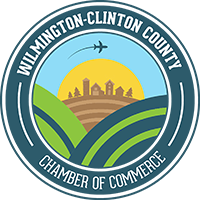Managed care best practices for recordkeeping, documentation and injury reporting
The month of May is Open Enrollment – an opportunity for Ohio employers that have state-funded workers’ compensation coverage to select their Managed Care Organization (MCO). Sedgwick Managed Care Ohio is a key partner for our workers’ compensation program and happens to be Ohio’s largest MCO – by far – in both claims managed and employers served.1
Recordkeeping and documentation
One of the roles of an MCO is to collect the essential data elements of a workplace injury to initiate a workers’ compensation claim. Depending on the approach to collecting and arranging this information, the MCO can be an excellent warehousing partner for injury-related data.
Sedgwick MCO provides clients are a series of value-added reports designed to facilitate record keeping obligations of OSHA and PERRP. Many report options include an ongoing tally of lost workdays associated with each claim, as well as the number of modified duty workdays. Access to this information on a monthly, quarterly and especially an annual basis (early January) can help employers complete their OSHA 300 and PERRP posting that is due each February.
MCOs should also be able to account for additional datapoints to help determine whether a workers’ compensation claim is OSHA-recordable. For example, if medications are prescribed in the treatment of a workplace injury, it may be OSHA recordable despite having incurred no lost or modified workdays. Similarly, if treatment for an injury includes services that exceed what is considered first-aid in nature, the injury may also be recordable despite involving no lost time. An example of this would be a laceration that involves stitches, but the employee returns to work immediately. Referencing medical billing codes to identify specific covered treatments can be a simple way to gather information that simplifies the OSHA and PERRP reporting process.
Injury reporting
The claim filing process depends on information from multiple parties, including the injured employee and the treating physician. But Sedgwick MCO encourages employers to take action as quickly as possible after a workplace incident to control this vital early stage of the process. Establishing post-injury protocols that include thorough documentation of the incident, as well as compiling information required by BWC, can accelerate a sound claim allowance decision. Early clarity on the nature of incident and injury can help frame the scope of the claim and define the medical conditions that are included for treatment.
The First Report of Injury (FROI) is the standard BWC form that accommodates the required information and typically initiates a new claim. Many employers keep the FROI on-hand to serve as an incident report. Sedgwick Managed Care Ohio will provide clients with an Injury Reporting Packet, which can include the FROI and other forms and information to help guide both the employer and the injured employee through the claim process.
Many employers have developed an incident report that collects much of the information required for the workers’ compensation claim. Consider modifications to your incident report that may facilitate a more efficient claim filing process. One of the best steps an employer can take to promote speed and accuracy in claim filing is to have an incident report completed quickly and sent directly to the managed care organization.
Contact Sedgwick Managed Care Ohio
If you feel there is room for improvement with your organization’s injury management program, or if you can use assistance organizing data for OSHA recording, Sedgwick MCO can help. Every work environment is different, and Sedgwick can talk through your circumstances to build a process that works for you and your employees. Visit Sedgwick MCO online to explore performance metrics and service features, or reach out directly at ClientServices@Sedgwickmco.com.
1 – BWC Demographic Data, January 2023, and BWC Public Data SP23-01161 as of 3/21/2023.
